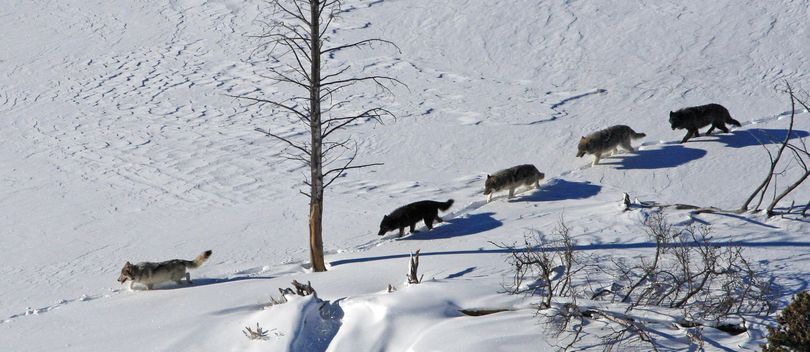Smoking a pack may be best wolf control measure, research says

PREDATORS – Aggressively dealing with wolves that kill livestock works better than a gradual approach, according to research in Montana.
When a group of wolves gets a taste for sheep or cattle, trying to kill a few of the offending wolves was not effective, the study shows. Eliminating the entire pack was a better course resulting in the killing of fewer wolves in the long run.
“Killing livestock is a learned behavior,” Montana Fish, Wildlife and Parks biologist Liz Bradley said. “You might have a pack in an area for several years and not have a problem, and then, boom, you have a livestock kill, and then it happens again and again and again. There are many variables, but if you decide removing wolves is the best option, you’re better to take more earlier than picking away at them.”
Here's more information from the Associated Press.
Ten years of data and study on wolves has helped wolf managers improve their tools for protecting cattle and sheep. Livestock deaths have shown a steady decline in the past several years.
Gray wolves were reintroduced in the Yellowstone National Park region in the mid-1990s.
“When wolves were just starting to come back – when they were still federally protected – the goal was get them recovered and off the endangered species list,” Bradley told the Missoulian. “Sometimes those removals were conservative – one here and one there, to see if that would work. What we found was those small removals weren’t effective.”
In a cursory view, Bradley’s results seem obvious: Remove a wolf pack, remove a livestock problem.
“What’s counterintuitive is you end up killing fewer wolves in the long run that way,” Bradley explained. “Maybe you have an incident and you kill a pack of six. That’s different than if you take three out every year, and the remainder have pups every year, and you end up taking 12 or 15 wolves over five or six years. If you removed that pack up front, you only take five or six, and give a chance for another (non-depredating) pack to move in.”
